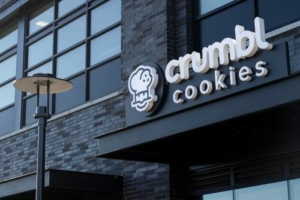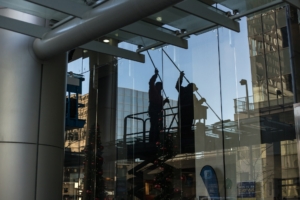The Implosion of Crumbl Cookies
 Searching for a franchise to purchase can be a very stressful time. Common sense would tell you to buy a franchise that is already well-established and a proven success. The problem with purchasing a top-performing franchise is that it comes with top-priced fees.
Searching for a franchise to purchase can be a very stressful time. Common sense would tell you to buy a franchise that is already well-established and a proven success. The problem with purchasing a top-performing franchise is that it comes with top-priced fees.
These companies have done the legwork for you and have ingrained themselves into American culture. They think you should pay for that privilege.
The other approach is to buy into a franchise that is newly started but has a rising rate too exciting to ignore. Get in on the ground level and enjoy the natural growth.
Unfortunately, these types of companies have a higher risk of failure because they are not yet proven in the market. They look great on paper and social media but their track record is still too short to be confident in.
A risk-taker loves these sorts of opportunities. They see them as their method to get back more than what they put in, which is what all investors aim to realize. The risk-averse are less likely to seize the opportunity when it is present and may miss out on an amazing opportunity because of that fear.
That is why a Crumbl Cookies franchise is a risk. They sell what the public wants, yet they have an alarming rise in franchisees looking to sell and get out.
What is causing this rush to get out of a franchise that is one of the more popular niche businesses in the marketplace?
Too Big, Too Fast
Looking at Crumbl’s rise to fame, it is easy to get caught up in the excitement and noise around the business. The business was started in 2017 in one state, by two cousins, while one of them was attending college.
Six years and one pandemic later, they have grown to over 900 locations stretching across two countries.
To say that Crumbl underwent a meteoric rise is an understatement.
When a franchise starts to grow at such a rate, it can tend to outgrow the market demand. Being a young franchise, it is understandable that this could be a misstep by the founders.
Is it something that Crumbl cannot recover from?
Time will tell.
Too Sweet for Their Own Good
While it may not appear that personal health is a focus amongst the American populace, there has been an increase in the number of people looking to get their own health in check, especially their weight.
When Crumbl came along, they offered unbelievably delicious cookies that were tested to dial in their optimal appeal to the palettes of the populace. They steadily expanded their reach and increased their offerings and choices to capture everyone’s taste buds and had lines forming around the block for new locations.
However, when the excitement wore off and the sugar rush cleared, people started realizing that a 12-pack of cookies maximized to appeal to every aspect of someone’s taste profile, is not a good idea to eat regularly. To say nothing of the fact that those dozen cookies would set you back at least $50.
And that isn’t Crumbl’s fault. They didn’t ask people to gorge themselves on the cookies they created. But as people start to look at their waistlines, as well as the ingredient facts in a decadent dessert the size of a toddler’s head, the rush to stand in line has turned into a less frequent indulgence for most people.
People Are Fickle
While the deliciousness of their cookies is a selling point on its own, one of the factors that has grown the reach of Crumbl so quickly is the use of social media to incite a buzz with their target audience. Their marketing agency found the pulse of their customers. Having the sort of social media success that Crumbl has seen is a major plus for any prospective franchisee.
However, when a business’s success depends too much on what they post online, it can be a recipe for disaster. One misread of the pulse of their followers and a company buoyed by their social media outreach can quickly find themselves drowning in a sea of complaints.
Crumbl focuses heavily on Gen Z customers, who range from ages 11 to 26. They are particularly big adopters of short-form media such as TikTok and short video formats on Facebook, YouTube, Instagram, and Snapchat.
By focusing on such a young demographic, members who are most attracted to short-form media and who may not be the breadwinners making the actual purchases, Crumbl is taking a risk. It is a risk of short-term engagement versus long-term growth. The franchisors selling their access for seven-figure fees are definitely more experienced with long-term growth.
Perhaps the recent surplus of Crumbl stores for sale on sites such as BizBuySell is a simple case of the marketplace regulating itself. Any business growing as much as Crumbl has in such a short time has captured an audience willing to support and promote the brand.
The only question is if that audience will be there for the long term, or just until the next start-up franchise of the year gets going.
Hopefully, the franchisees who bought into the hype won’t be left with a bitter taste.
If you are looking to skip the start-up and buy into a business that has already proven itself, give us a call. It’s what we do.

 It’s often said that entrepreneurs and founders start companies to prove somebody else wrong, and
It’s often said that entrepreneurs and founders start companies to prove somebody else wrong, and  For entrepreneur and former hotel magnate
For entrepreneur and former hotel magnate  You’ve most likely heard the expression, “You learn more from your failures than your successes.” Entrepreneur Josh Anhalt is living proof of that statement. He recently sold his business
You’ve most likely heard the expression, “You learn more from your failures than your successes.” Entrepreneur Josh Anhalt is living proof of that statement. He recently sold his business  As a refugee during the Gulf War, entrepreneur Lloyed Lobo has faced challenges that shaped his perspective on community and support. The values instilled by his family and early life experiences left a lasting impression on his approach to both business and life.
As a refugee during the Gulf War, entrepreneur Lloyed Lobo has faced challenges that shaped his perspective on community and support. The values instilled by his family and early life experiences left a lasting impression on his approach to both business and life. When it comes to building a successful service-based business, few entrepreneurs can match the journey of Brandon Lazar. Over the course of 15 years, he transformed a simple window cleaning operation into a thriving business that served his community. But what happens when it’s time to move on and
When it comes to building a successful service-based business, few entrepreneurs can match the journey of Brandon Lazar. Over the course of 15 years, he transformed a simple window cleaning operation into a thriving business that served his community. But what happens when it’s time to move on and  When Alex Macdonald first created a product that would become Velocity Black, he was simply looking to find wonderful (and exclusive) restaurants and make them easier to find and book. By the time he helped sell his company for just under $300M, he had taken that initial idea and refined it into a 24/7/365 AI-assisted private concierge service, which is something Capital One wanted to have for its products and services.
When Alex Macdonald first created a product that would become Velocity Black, he was simply looking to find wonderful (and exclusive) restaurants and make them easier to find and book. By the time he helped sell his company for just under $300M, he had taken that initial idea and refined it into a 24/7/365 AI-assisted private concierge service, which is something Capital One wanted to have for its products and services. If you ask Ian Fraser, co-founder of
If you ask Ian Fraser, co-founder of  When Dr. Joseph Marchell started Old Brown Dog Veterinary Partners he was a broke, in-debt recent college graduate. But he took six months working at a private equity firm, observed what was going on in the marketplace, made moves, and bet big. In the end, he achieved a 28X
When Dr. Joseph Marchell started Old Brown Dog Veterinary Partners he was a broke, in-debt recent college graduate. But he took six months working at a private equity firm, observed what was going on in the marketplace, made moves, and bet big. In the end, he achieved a 28X 